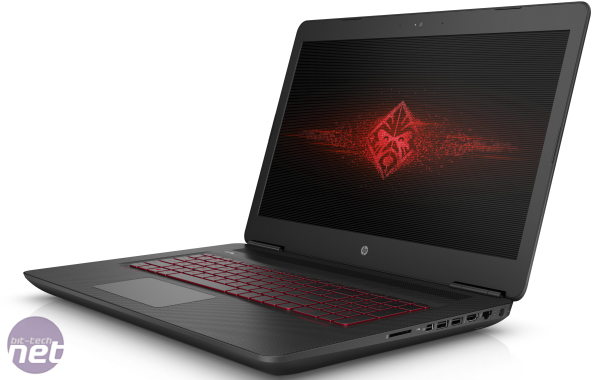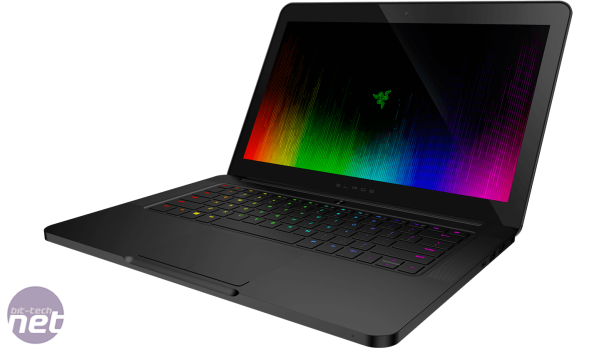
Nvidia has revealed a slew of information about new gaming notebooks based on its Pascal GPUs.
As ever, a wide range of different models from all the usual partners will be available, with the common thread between them all being the use of a GTX 10-series GPU. Unlike previous generations, these will not be mobile variants, with Nvidia doing away now with the '-M' suffix that has traditionally been used to label mobile GPUs i.e. there will be no GTX 1080M. Instead, the specs and performance are now close enough that Nvidia will be unifying the naming structure across desktop and mobile – you can expect gaming notebooks sporting the GTX 1060, GTX 1070 and even the GTX 1080, albeit with a few slight adjustments.
Technically, this isn't new for Nvidia. Last year, the firm revealed that it would be using full GTX 980 GPUs in notebooks, but the approach has now been adopted for the whole of the Pascal family.
Starting at the top of the line, the GTX 1080 will be replacing the notebook variant of the GTX 980. Architecturally, it's the same as the desktop part – a GP104 die with all 2,560 cores and other bits intact, attached to 8GB of GDDR5X running at 10Gbps. The boost clock stays the same at 1,733MHz, but the base clock drops a little to 1,556MHz.
The notebook GTX 1070, which replaces the GTX 980M, does differ in its core configuration from the standard desktop part. There are now 16 instead of 15 SMs enabled, which actually increases the core count from 1,920 to 2,048. In turn, however, these run slower at new base/boost speeds of 1,442MHz/1,645MHz – said to be a more efficient way of achieving roughly the same performance. The memory configuration is the same 8GB of GDDR5 at 8Gbps.
Lastly, there's the GTX 1060, which sits in for the outgoing GTX 970M. The core count is the same as the desktop part, but again we see clock speed reductions to both the base and boost. The memory is again left in the standard configuration: 6GB of GDDR5 at 8Gbps.
TDP figures have not been revealed beyond Nvidia saying that they're close to those of the chips they replace. Given the inherent space limitations of the notebook form factor, we can expect these chips to be more power and thermally limited than the desktop chips, but perhaps not as much as you might think. Nvidia is specifically selecting chips which demonstrate above average efficiency for the notebook parts, and says performance should be within 10 percent of the desktop parts, assuming that the system's CPU and memory are also comparable.
Pascal has allowed for clock speeds for both the GPU and memory to be massively increased. Ultimately, Nvidia is touting up to 76 percent performance increases in moving from Maxwell notebooks to Pascal ones, which is the company's largest generational uplift ever.

So, what does this all translate to in performance terms? What you can achieve will of course depend on the exact model you have, but Nvidia says 120fps 1080p Ultra gameplay is now a possibility, as is 4K with high settings (only with a GTX 1080, of course). All of the notebooks are VR ready too, supporting Nvidia's full suite of VRWorks features. We're looking at getting some review units in soon to really see what's possible.
If all that performance isn't enough for you, however, then fear not – Pascal notebooks include support for overclocking, although again exact support depends on the manufacturer and model. Nvidia says it expects to see overclocks in the realm of 200MHz on Pascal notebook GPUs, claiming that boosts of up to a staggering 300MHz are possible. Dual-FET power supplies, which increase power density, and multi-phased power controllers, which improve efficiency, are part of the approach that enable this, as well as simply the refinements made within the Pascal architecture itself.

The more in-depth overclocking (per-state) that Pascal introduced is also supported, allowing users to create custom boost curves should they really wish. Voltage tweaking is not supported, nor is raising the power limit, since these would risk interfering with electrical limitations within the system as a whole. Nvidia is encouraging its partners to permit fan speed offsetting, but ultimately it will be up to the OEM.
As for gaming on the go, Nvidia is saying it's achieved up to 30 percent more battery life (using like-for-like model comparisons). All the laptops will support Battery Boost, a user-configurable means of balancing image quality, frame rate and battery life. Nvidia is also rolling out a driver-level update to Battery Boost to address frame variance issues – this is something Maxwell notebook owners can take advantage of too.
Widened G-Sync support is another thing to note. Previously, notebook G-Sync was limited to 1080p 75Hz, but this is now increasing to 1440p 120Hz, with Nvidia tripling the number of certified panels for the new range.

In terms of what you'll actually see for launch, pretty much all the usual partners are onboard and most, at this time, will simply be refreshing older SKUs with the newer parts to achieve more performance but without necessarily being lighter or thinner. You can still expect a wide array of multi-kilogram monsters touting power bricks big enough to weaponise. That said, thin and light GTX 1060 laptops will be available, the thinnest being 18mm and the lightest being 4lbs (1.81kg).
Nvidia told us it expected laptops to be available immediately, with UK retailers expected to reveal their stock later this afternoon. It also quoted a starting price of $1,300 for GTX 1060 laptops, but pricing will of course vary wildly based on OEM, GPU and laptop model.
As ever, a wide range of different models from all the usual partners will be available, with the common thread between them all being the use of a GTX 10-series GPU. Unlike previous generations, these will not be mobile variants, with Nvidia doing away now with the '-M' suffix that has traditionally been used to label mobile GPUs i.e. there will be no GTX 1080M. Instead, the specs and performance are now close enough that Nvidia will be unifying the naming structure across desktop and mobile – you can expect gaming notebooks sporting the GTX 1060, GTX 1070 and even the GTX 1080, albeit with a few slight adjustments.
Technically, this isn't new for Nvidia. Last year, the firm revealed that it would be using full GTX 980 GPUs in notebooks, but the approach has now been adopted for the whole of the Pascal family.
Starting at the top of the line, the GTX 1080 will be replacing the notebook variant of the GTX 980. Architecturally, it's the same as the desktop part – a GP104 die with all 2,560 cores and other bits intact, attached to 8GB of GDDR5X running at 10Gbps. The boost clock stays the same at 1,733MHz, but the base clock drops a little to 1,556MHz.
The notebook GTX 1070, which replaces the GTX 980M, does differ in its core configuration from the standard desktop part. There are now 16 instead of 15 SMs enabled, which actually increases the core count from 1,920 to 2,048. In turn, however, these run slower at new base/boost speeds of 1,442MHz/1,645MHz – said to be a more efficient way of achieving roughly the same performance. The memory configuration is the same 8GB of GDDR5 at 8Gbps.
Lastly, there's the GTX 1060, which sits in for the outgoing GTX 970M. The core count is the same as the desktop part, but again we see clock speed reductions to both the base and boost. The memory is again left in the standard configuration: 6GB of GDDR5 at 8Gbps.
| GTX 1080 (desktop) | GTX 1080 (notebook) | GTX 1070 (desktop) | GTX 1070 (notebook) | GTX 1060 (desktop) | GTX 1060 (notebook) | |
| GPU | GP104 | GP104 | GP104 | GP104 | GP106 | GP106 |
| Base Clock | 1,607MHz | 1,556MHz | 1,506MHz | 1,442MHz | 1,506MHz | 1,404MHz |
| Boost Clock | 1,733MHz | 1,733MHz | 1,683MHz | 1,645MHz | 1,708MHz | 1,670MHz |
| Stream Processors | 2,560 | 2,560 | 1,920 | 2,048 | 1,280 | 1,280 |
| Memory | 8GB GDDR5X | 8GB GDDR5X | 8GB GDDR5 | 8GB GDDR5 | 6GB GDDR5 | 6GB GDDR5 |
| Frequency | 1.25GHz (10Gbps effective) | 1.25GHz (10Gbps effective) | 2GHz (8Gbps effective) | 2GHz (8Gbps effective) | 2GHz (8Gbps effective) | 2GHz (8Gbps effective) |
| Interface | 256-bit | 256-bit | 256-bit | 256-bit | 192-bit | 192-bit |
| Bandwidth | 320GB/sec | 320GB/sec | 256GB/sec | 256GB/sec | 192GB/sec | 192GB/sec |
TDP figures have not been revealed beyond Nvidia saying that they're close to those of the chips they replace. Given the inherent space limitations of the notebook form factor, we can expect these chips to be more power and thermally limited than the desktop chips, but perhaps not as much as you might think. Nvidia is specifically selecting chips which demonstrate above average efficiency for the notebook parts, and says performance should be within 10 percent of the desktop parts, assuming that the system's CPU and memory are also comparable.
Pascal has allowed for clock speeds for both the GPU and memory to be massively increased. Ultimately, Nvidia is touting up to 76 percent performance increases in moving from Maxwell notebooks to Pascal ones, which is the company's largest generational uplift ever.

So, what does this all translate to in performance terms? What you can achieve will of course depend on the exact model you have, but Nvidia says 120fps 1080p Ultra gameplay is now a possibility, as is 4K with high settings (only with a GTX 1080, of course). All of the notebooks are VR ready too, supporting Nvidia's full suite of VRWorks features. We're looking at getting some review units in soon to really see what's possible.
If all that performance isn't enough for you, however, then fear not – Pascal notebooks include support for overclocking, although again exact support depends on the manufacturer and model. Nvidia says it expects to see overclocks in the realm of 200MHz on Pascal notebook GPUs, claiming that boosts of up to a staggering 300MHz are possible. Dual-FET power supplies, which increase power density, and multi-phased power controllers, which improve efficiency, are part of the approach that enable this, as well as simply the refinements made within the Pascal architecture itself.

The more in-depth overclocking (per-state) that Pascal introduced is also supported, allowing users to create custom boost curves should they really wish. Voltage tweaking is not supported, nor is raising the power limit, since these would risk interfering with electrical limitations within the system as a whole. Nvidia is encouraging its partners to permit fan speed offsetting, but ultimately it will be up to the OEM.
As for gaming on the go, Nvidia is saying it's achieved up to 30 percent more battery life (using like-for-like model comparisons). All the laptops will support Battery Boost, a user-configurable means of balancing image quality, frame rate and battery life. Nvidia is also rolling out a driver-level update to Battery Boost to address frame variance issues – this is something Maxwell notebook owners can take advantage of too.
Widened G-Sync support is another thing to note. Previously, notebook G-Sync was limited to 1080p 75Hz, but this is now increasing to 1440p 120Hz, with Nvidia tripling the number of certified panels for the new range.

In terms of what you'll actually see for launch, pretty much all the usual partners are onboard and most, at this time, will simply be refreshing older SKUs with the newer parts to achieve more performance but without necessarily being lighter or thinner. You can still expect a wide array of multi-kilogram monsters touting power bricks big enough to weaponise. That said, thin and light GTX 1060 laptops will be available, the thinnest being 18mm and the lightest being 4lbs (1.81kg).
Nvidia told us it expected laptops to be available immediately, with UK retailers expected to reveal their stock later this afternoon. It also quoted a starting price of $1,300 for GTX 1060 laptops, but pricing will of course vary wildly based on OEM, GPU and laptop model.

MSI MPG Velox 100R Chassis Review
October 14 2021 | 15:04








Want to comment? Please log in.